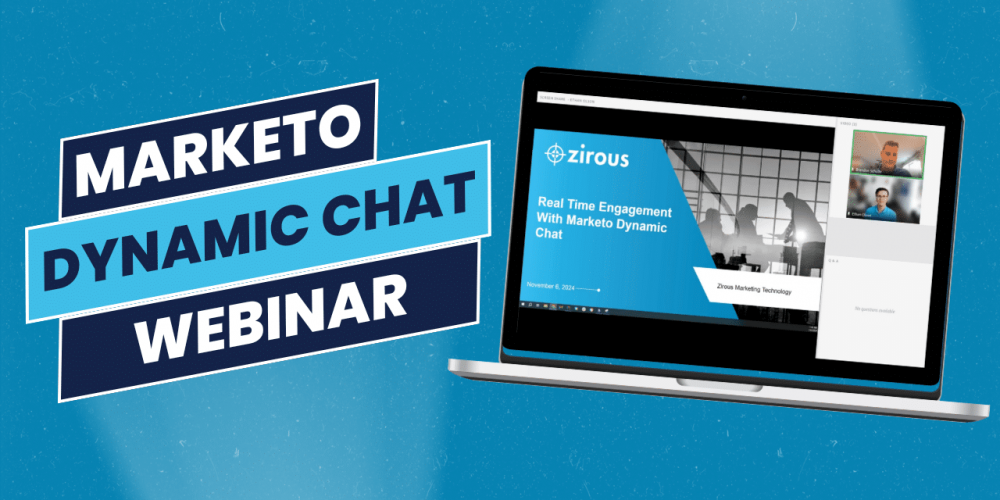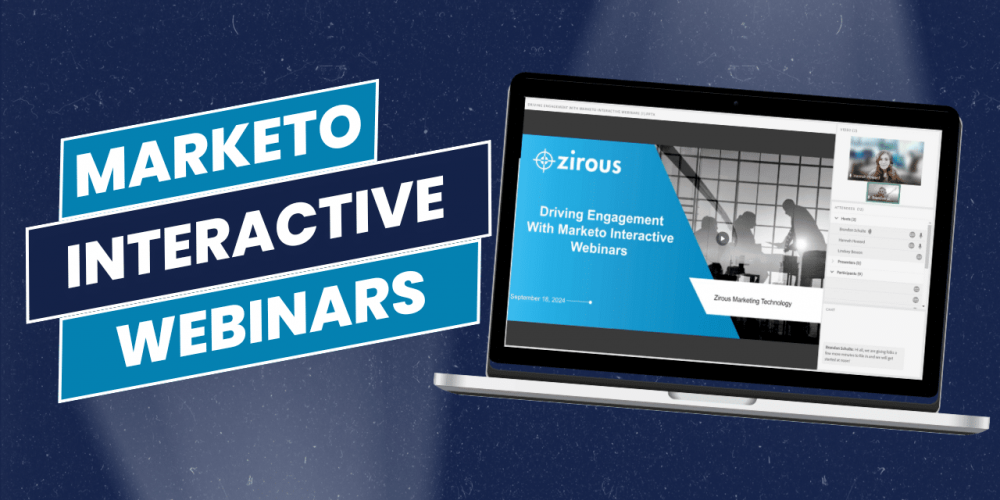Looking to enhance your website's engagement and capture valuable leads in…
Key Takeaways
- Increasing amounts of data, from many different sources and run by siloed teams, create barriers to achieving a customer 360 view.
- Understanding where your data is sourced, creating a standardized data layer and determining where it needs to flow helps decide the right solution for your organization.
- Implemented correctly either alternative is a worthy investment that will reduce costs and create demand-generation opportunities, which means few potential projects have the same ROI potential.
Companies like Netflix, Amazon, Etsy and Grubhub leap to mind when you think of the fastest growing companies today. Each of these companies has grown revenue by more than 30% over the past three years.
However, these companies appear to be stuck in revenue growth quicksand when compared to OneTrust, which boasts an unbelievable 48,337% growth rate over the past three years. While far from a household name, OneTrust, which focuses on privacy, security and governance, has dominated its industry and become a trusted vendor for over half of the Fortune 500 companies to comply with privacy regulations. In a surprising twist, just like OneTrust these legal regulations could be your next big ticket to growth.
Before we discuss how regulations and growth go together, let’s talk about the patchwork of laws and regulations related to data privacy across the globe.
In the past three years, CASL (Canada Anti-Spam Law), GDPR (General Data Protection Regulation) and CCPA (California Consumer Privacy Act) have revolutionized how companies must control data to protect the privacy of their consumers. Due to the ever-increasing penalties for noncompliance sticking your head in the sand about these regulations isn’t a feasible strategy. Noncompliance carries significant potential fines, ranging from millions of dollars all the way up to a percentage of annual revenues.
Too often the revenue generation apparatus (marketing, sales, e-commerce and even technology) at many companies has looked at these laws as overly burdensome and diametrically opposed to growth. Frankly, that isn’t surprising given these laws require (among other things) the:
- Privilege to only receive marketing communications where there is expressed consent.
- Ability to understand how personal information is collected, stored, used and shared.
- Opportunity to opt out of the sale of personal information.
- Right to have data removed upon request.
While I could be off-base, other than an actuary I know most people don’t get excited about risk mitigation. In fact, many marketing or technology leaders who have been in the arena the past few years can remember where they were when the call or email from legal came through, informing of these new regulations and asking for a compliance plan.
These discussions started with a good deal of tension. Questions included:
- How are we supposed to attract and retain customers within the parameters of new guidelines?
- How can we personalize experiences for customers without data?
- How do we track engagement?
- Can our process support different rules for different geographies?
- What projects get bumped in order to meet new deadlines?
Turning Compliance Lemons Into Lemonade
At first it was tough to see any positive impact on demand generation teams. But after some reflection I’ve begun to see an opportunity to build back a better marketing system.
Here’s what turned the tables for me. I was listening to a marketing podcast and the speaker was talking about the importance of building trust with consumers. A recent study found that 81% of customers directly correlate trusting a brand with making a purchase from that company.
What better way can a brand demonstrate trustworthiness than having a robust process to opt-in users to receive communications? Or putting security practices in place to manage, store and secure that data? And offering users the ability to subscribe or unsubscribe from different pieces of content?
Think of how many times you’ve been solicited to buy products you aren’t interested in — or have already purchased. If you’re anything like me, it doesn’t instill a faith in that brand.
On the other end of the spectrum, think of your best customer experience. In some cases it may have been due to exceptional customer service. However, many times it was due to the foundational elements of the customer experience, where the company used data to “know” you and fill your needs at just the right moment.
Think of the power of a cross-channel experience that, no matter what medium you use, picks up where you left off and enables you to solve your needs rather than placing barriers in front of you. Privacy compliance doesn’t get you to this point on its own, but if you can build an infrastructure that keeps you in compliance and also sets the foundation for better customer journeys, you’re killing two birds with one stone.
You may be thinking, “That sounds great, but how do I get from where I am today to this transformative vision?”
Here are the five Cs of privacy compliance: consent, choice, combine, centralize and conservation. By aligning around these strategies you can put your company in a better position for success.
Consent
At every touch point with a customer you should try to gain consent. This includes the ubiquitous cookie policy you see on most websites that allows users to opt-in or opt-out of behavioral tracking. It also includes attempting to get consent when users fill out forms, register for an account or purchase products.
Offer incentives for giving consent, which could include being the first to know about key product offerings, discounts or chances to win something. This consent must be managed in real time and integrated with other connection points to avoid conflict between data in different systems.
Choice
While buyer power exists in some industries more than others, it is very rare when a company can offer substandard products or services and keep its customer base. It is important to give users the ability to consent to certain messages while restricting others. A good example of this is a preference center where a user can sign up or update what they wish to receive from your company. A subscription center is also important during the unsubscribe process so the user hopefully only opts out of one category versus severing their entire relationship with your brand.
Combine
In the fluid channel experience that most customers inhabit today the ability to bring data together from different systems is paramount to your master data management strategy. Most systems have some data on a customer, but only when it is all combined do you see the complete 360-degree picture of the customer. That picture is what allows you to better segment and target. This type of system also helps eliminate the problems that can arise from siloed customer data, which can lead to strange customer experiences.
Centralize
The importance of centralizing your data cannot be overstated. A master record that combines the most up-to-date user information and activities at both the individual and the account level offers a level of insight that is second to none. A master record should have customer demographic and behavioral data, including transactional data like purchases and page views. This central record will allow you to execute on this information in real time, whether it is to add personalization onto your website, send targeted emails, enhance digital advertising or simply get more value for your media spend.
Conservation
Marketing Sherpa found that the average customer database decays about 2.1% per month — or almost 23% per year. That means it is critical to remove bounces and unsubscribes from email campaigns and to update customer data as a part of a daily process. Some firms employ third-party data cleaning tools like ZoomInfo, D&B, etc. to enrich and clean records. Keeping data fresh not only means your messages hit the right people, it also leads to a reduction in costs through more cost-effective campaigns and decreased data storage costs.
When it comes to compliance the only certainty is that it will be more important tomorrow than it is today. And while that can be scary it can be a great opportunity if given the right focus. Zirous, a technology data and insights company established by leading marketing and technology experts, is here to help you along your compliance journey. Contact us today to learn more.




This Post Has 0 Comments